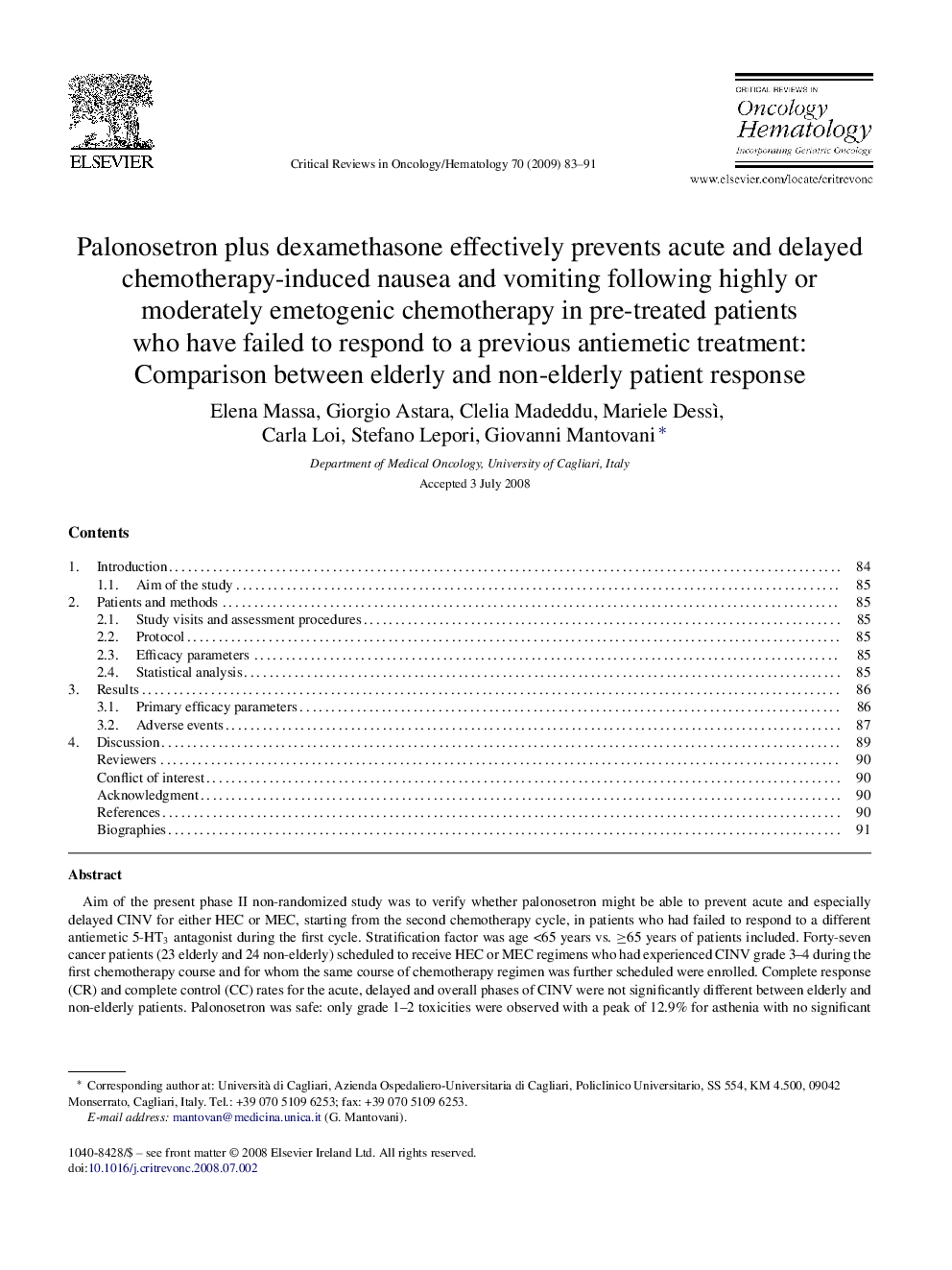| Article ID | Journal | Published Year | Pages | File Type |
|---|---|---|---|---|
| 3329701 | Critical Reviews in Oncology/Hematology | 2009 | 9 Pages |
Aim of the present phase II non-randomized study was to verify whether palonosetron might be able to prevent acute and especially delayed CINV for either HEC or MEC, starting from the second chemotherapy cycle, in patients who had failed to respond to a different antiemetic 5-HT3 antagonist during the first cycle. Stratification factor was age <65 years vs. ≥65 years of patients included. Forty-seven cancer patients (23 elderly and 24 non-elderly) scheduled to receive HEC or MEC regimens who had experienced CINV grade 3–4 during the first chemotherapy course and for whom the same course of chemotherapy regimen was further scheduled were enrolled. Complete response (CR) and complete control (CC) rates for the acute, delayed and overall phases of CINV were not significantly different between elderly and non-elderly patients. Palonosetron was safe: only grade 1–2 toxicities were observed with a peak of 12.9% for asthenia with no significant difference between elderly and non-elderly patients. In conclusion, single dose palonosetron (250 μg) should be considered a safe and effective second generation 5-HT3 antagonist in the prevention of nausea and vomiting induced by HEC or MEC, irrespective of patients’ age.
